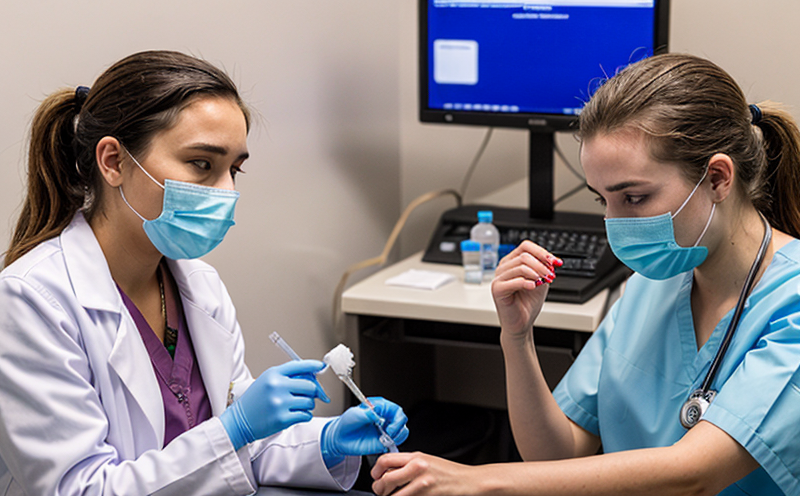FDA BAM Campylobacter Detection in Clinical Testing
The FDA Bacteriological Analytical Manual (BAM) method is a cornerstone of microbiological testing, providing validated protocols that ensure accurate and reliable detection of pathogens. Specifically, the Campylobacter species are among the most common causes of bacterial gastroenteritis worldwide. The BAM protocol for detecting Campylobacter jejuni and Campylobacter coli is recognized as a robust method in clinical microbiology laboratories.
The process begins with specimen collection, which typically involves stool samples from patients exhibiting gastrointestinal symptoms such as diarrhea. Proper sample handling and transport are critical to ensure the integrity of the specimens. Once received at the laboratory, the samples undergo preliminary examination for gross characteristics before being inoculated into selective media like Campy-BAC Select or Campy-Select (as per BAM 902). This step is essential in reducing background flora interference.
The incubation period varies depending on the medium used and temperature conditions. Typically, it takes around 48 hours for colonies to appear on the selective media. Confirmation tests like Gram staining, biochemical reactions (e.g., VP test), and diagnostic assays such as API systems or molecular techniques are then employed to identify Campylobacter species.
The BAM protocol is not only about detection but also emphasizes quality assurance through strict adherence to standard operating procedures. This includes maintaining environmental control, calibration of equipment, and regular proficiency testing to ensure consistent results across different laboratories.
A key advantage of the BAM method lies in its sensitivity and specificity, making it suitable for clinical settings where accurate diagnosis is paramount. Moreover, this methodology aligns with international standards such as ISO 14648-2019 and EN ISO/IEC 17025:2017, ensuring compliance with global quality management systems.
To optimize the BAM Campylobacter detection process, laboratories should invest in advanced instrumentation like automated colony counters for faster identification. Additionally, training staff on the latest techniques ensures they can effectively interpret results and maintain high standards of patient care.
| Industry Applications | Description |
|---|---|
| Clinical Laboratories | Detecting pathogenic Campylobacter species in stool samples from patients suspected of having gastroenteritis. |
| Public Health Agencies | Monitoring food safety and environmental contamination by identifying sources of Campylobacter. |
| Use Cases and Application Examples | Description |
|---|---|
| Disease Surveillance Programs | Tracking the incidence of Campylobacter-related diseases in populations. |
| Food Safety Audits | Evaluating potential contamination risks in food production facilities and distribution chains. |
- Key Benefits: Enhanced accuracy, reduced false positives/negatives, compliance with international standards.





